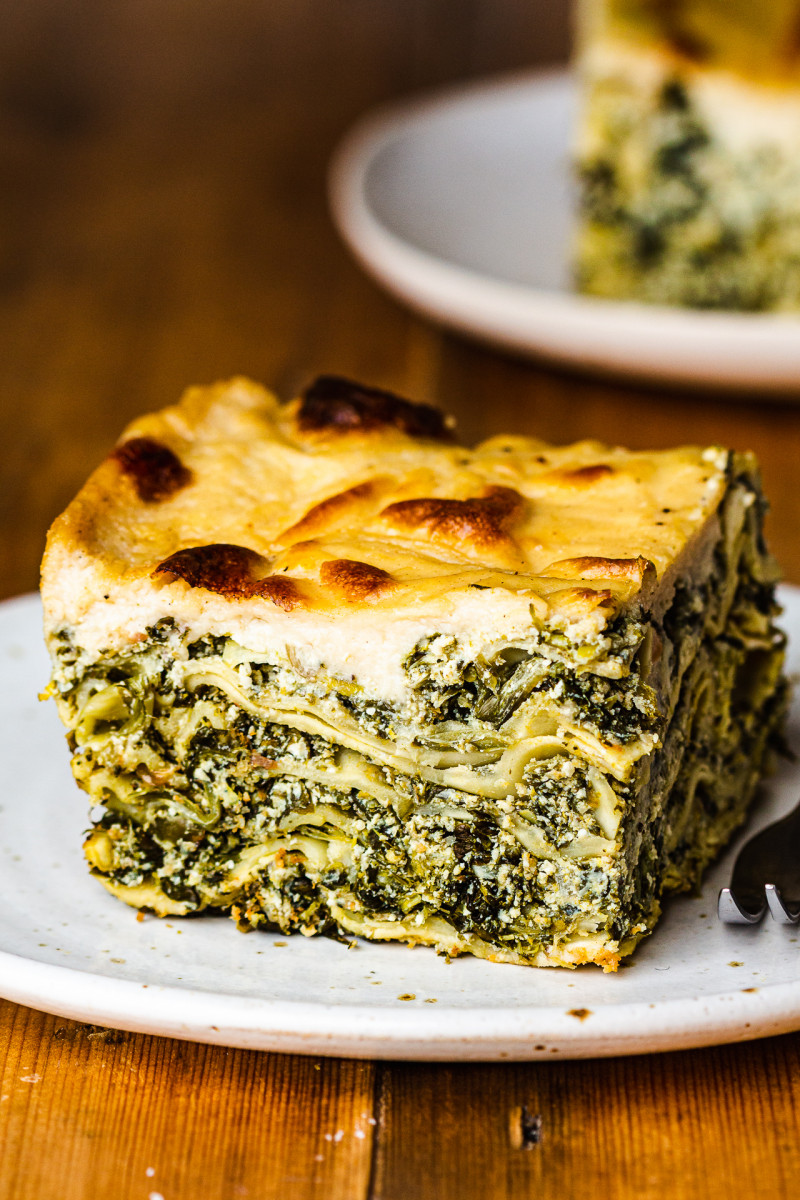
As we are right in the middle of the spinach season here in the UK I figured it’s time for a vegan spinach lasagne – a dish that celebrates this dark green leafy vegetable, which used to be my childhood food nemesis. Now I love spinach and use it often, most recently I published my plant-based take on this classic Indian spinach curry – saag paneer – and even though its flavours and texture reminds me of garlicky creamed spinach I used to dread as a kid, now that I am ‘team spinach’, I love it.
This vegan spinach lasagne is just as delicious, nutritious and easy to prepare too. I made it with frozen spinach as it cuts down on prep time considerably, but you can use fresh spinach if you prefer. This dish features filling spinach sauce fragrant with dill, parsley and lemon, layers of perfectly cooked pasta and a generous layer of creamy vegan bechamel, which gets beautifully golden and crispy around the edges. It’s a perfect sharing dish so ideal for upcoming Easter meal or you could even make it for one or two people and eat throughout the week – that’s what we do – or freeze the leftovers for another time.
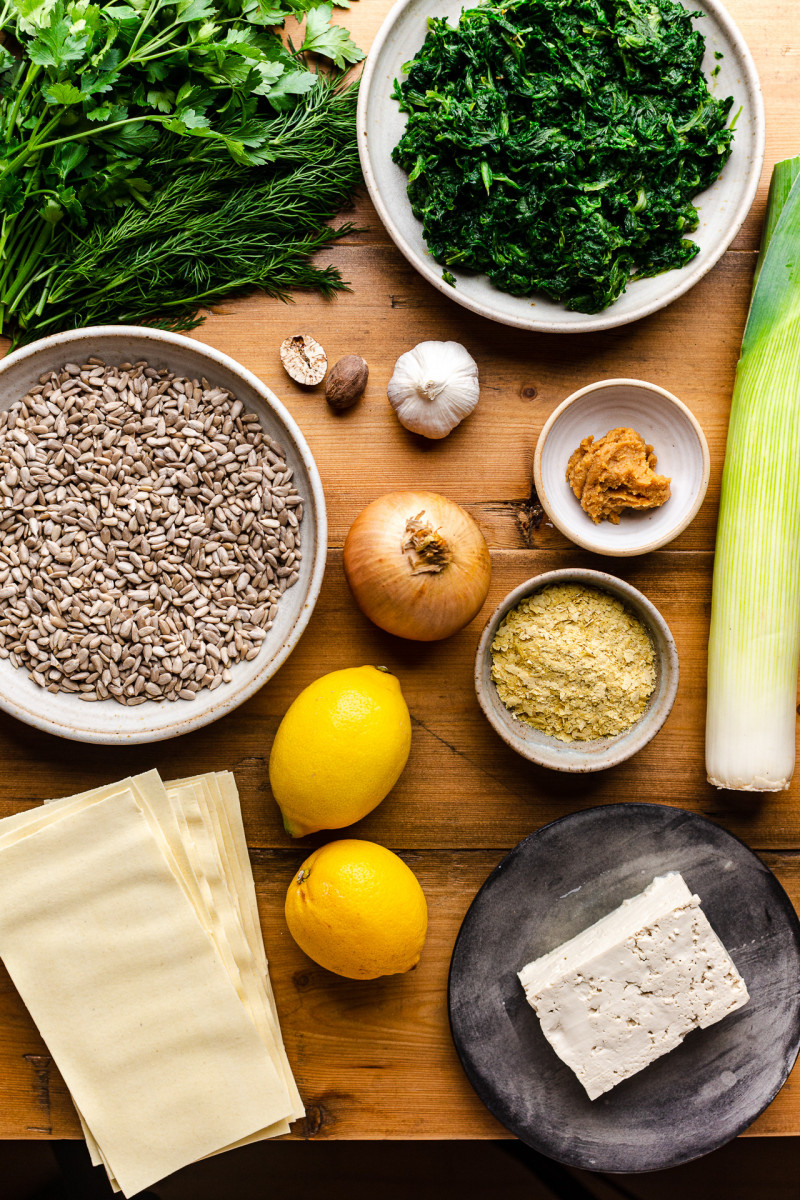
MORE ABOUT THE INGREDIENTS
SPINACH: As this is a spinach lasagne, there is a lot of spinach in this dish. I used frozen spinach as it cuts down on prep, but you can use fresh spinach if that’s what you have. I emptied a bag of frozen spinach into a large mixing bowl and allowed it to thaw slowly on my kitchen counter. I then squeezed the moisture out of it using my hands before adding it to the pan with vegan ricotta mixture. If using fresh spinach, use the same amount of spinach by weight, blanch it in boiling water for 60 seconds, squeeze excess water out then mince/chop up finely.
ONION, GARLIC: Not much of an explanation needed here as these are true staples of any savoury dish, the world over. Some people add them to the pan together to speed things up, but I prefer to give the onion a head start as it takes considerably longer to cook than garlic and garlic is prone to burning when exposed to too much heat, which can render a dish bitter. Go slow and low with these two ingredients and remember to stir often.
LEEK: I used a leek, alongside onion, as they are in season right now and I enjoy the sweetness it adds to dishes. The key thing about leeks is to clean them well as they are notorious for hiding away grit in between their layers. I chop the dark green part off and discard, then cut it in half lengthwise. While holding all the layers nested in each other, I check for grit with my other hand and rise with water if needed. I dry it well before sautéing.
SUNFLOWER SEEDS: Hulled sunflower seeds soaked in water to soften are a great plant-based ricotta substitute in a dish like this. You can also use cashews but I wanted to keep this dish nut-free and budget-friendly, which sunflower seeds do. Soak them in cold water overnight or in boiling water for about 1 hour, drain and they are ready to use.
TOFU: I used firm (non-silken variety) tofu alongside sunflower seeds to mimic traditionally used ricotta. There is no need to press the tofu, simply drain and use as is.
LEMONS: I used a zest of two lemons and half a cup of lemon juice to add brightness and a touch of tang to the sauce. Half a cup of lemon juice seems like a lot, but it’s a lot of sauce so don’t be shy and you can always add a little less if that’s what your palate is happy with.
NUTRITIONAL YEAST: Nutritional yeast is what adds a hint of cheesiness and umami to both the spinach sauce and the bechamel. It may seem like a lot, but again it’s a lot of sauce so trust me.
MISO PASTE: I used white (shiro) miso paste to add a bit more depth to the spinach sauce. You could use red miso, but be aware that it’s more intense so you may want to add a little less.
NUTMEG: Nutmeg is an essential spice when it comes to a dish like this. I used some in the spinach sauce and in the bechamel. Ideally, you want to grate it from fresh as the flavour is just so much more intense, but an already ground spice works well too. Adjust the amount to taste, if using ground nutmeg you may want to add a little more.
HERBS: I used a combination of fresh flat leaf parsley and dill in this dish and I like it a lot, but of for whatever reason you’d rather use something different, feel free. Basil would also work well in my opinion.
LASAGNE PASTA: Unless the packet states ‘egg pasta’, most lasagne sheets are vegan these days so you will have no trouble finding them. I tend to go for no cook sheets as they are less hassle.
PLANT MILK: Apart from using plant milk to create vegan bechamel, I added a generous amount of plant milk to give the spinach sauce the desired consistency.
OLIVE OIL: I use mild olive oil as a base for my bechamel sauce, but vegan butter or a mixture of the two works well too.
FLOUR: I use all purpose wheat flour to make a roux for my bechamel. If making this dish gluten-free, use a good gluten-free flour mix that includes starches and ideally some xanthan gum.

Combine drained (no need to press) tofu and soaked (also drained) sunflower seeds and all of the flavourings in a food processor. Hold some of the salt and pepper back so that you can adjust the seasoning to your liking at the end. Process trickling in some of the plant milk until your mixture resembles ricotta like texture (see photo on the left).
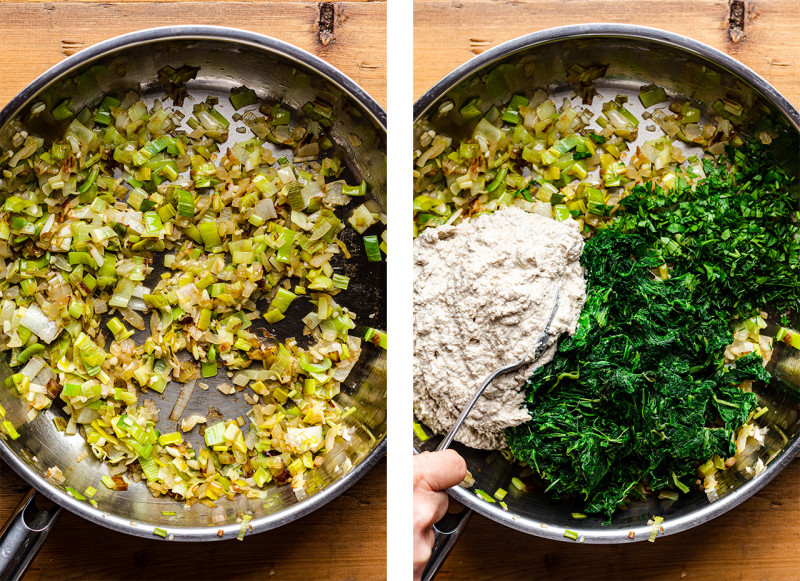
Sauté onion, garlic and leek in some olive oil until soft and translucent. Once done, add in vegan ricotta mixture, squeezed out spinach and chopped herbs.
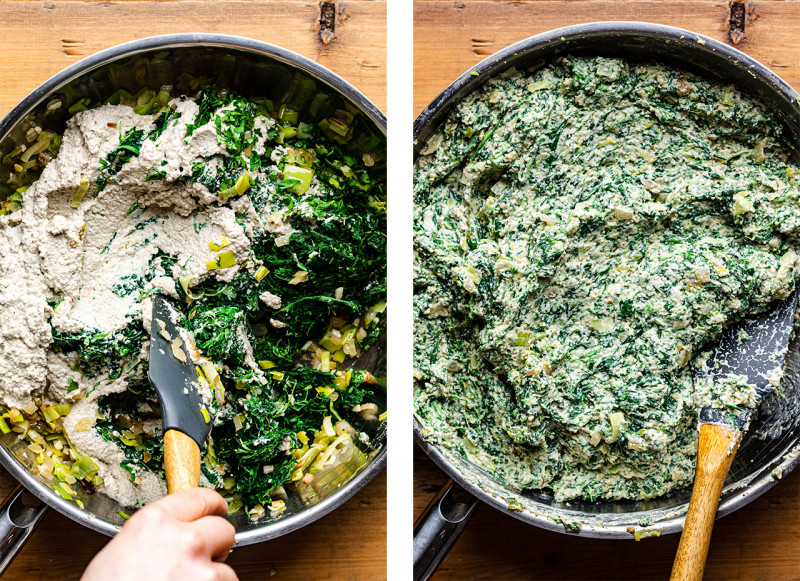
Mix everything together, add the rest of the plant milk to keep this mixture moist and adjust seasoning to your liking remembering that pasta goes in unseasoned.
ASSEMBLY
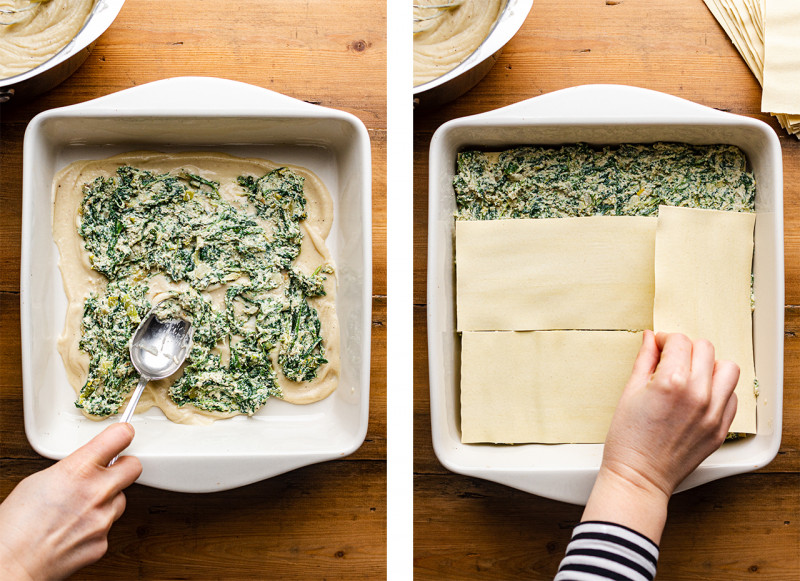
Spread half a cup of bechamel sauce and half a cup of spinach sauce at the bottom of your baking tray. Cover with no cook pasta sheets – overlapping them slightly if needed and breaking some with your hands to cover smaller gaps.
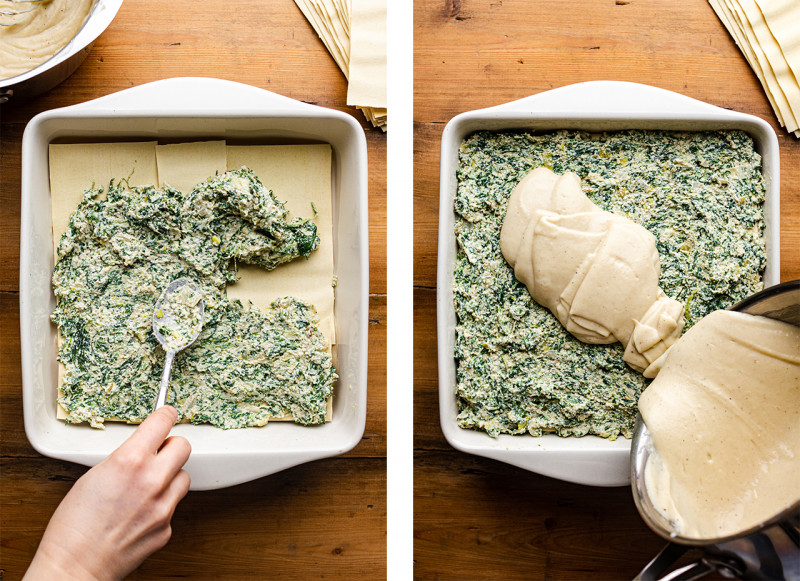
Top the first layer of pasta with about 1.5 cups of spinach sauce, followed by another layer of pasta. Repeat the same two more times. Finally spread the rest of spinach sauce on top and immediately follow by bechamel. Spread it with a spatula and bake for 40-45 minutes, until the dish is bubbling and the top is golden brown. Allow it to set for an hour before cutting or, even better, wait to serve until the next day – lasagne’s flavours will benefit from a prolonged rest.
FREQUENTLY ASKED QUESTIONS
HOW LONG DOES IT KEEP?
Once cold, store lasagne pieces for 3-4 days in an air-tight container in the fridge. To reheat, place in an oven-proof dish, cover the top with a piece of kitchen foil and reheat in a 150° C / 300° F oven for about 30 minutes (or until warmed through).
CAN I FREEZE IT?
Yes, it freezes well. To thaw, leave in the fridge overnight. To reheat, place in an oven-proof dish, cover the top with a piece of kitchen foil and reheat in a 150° C / 300° F oven for about 30 minutes (or until warmed through).

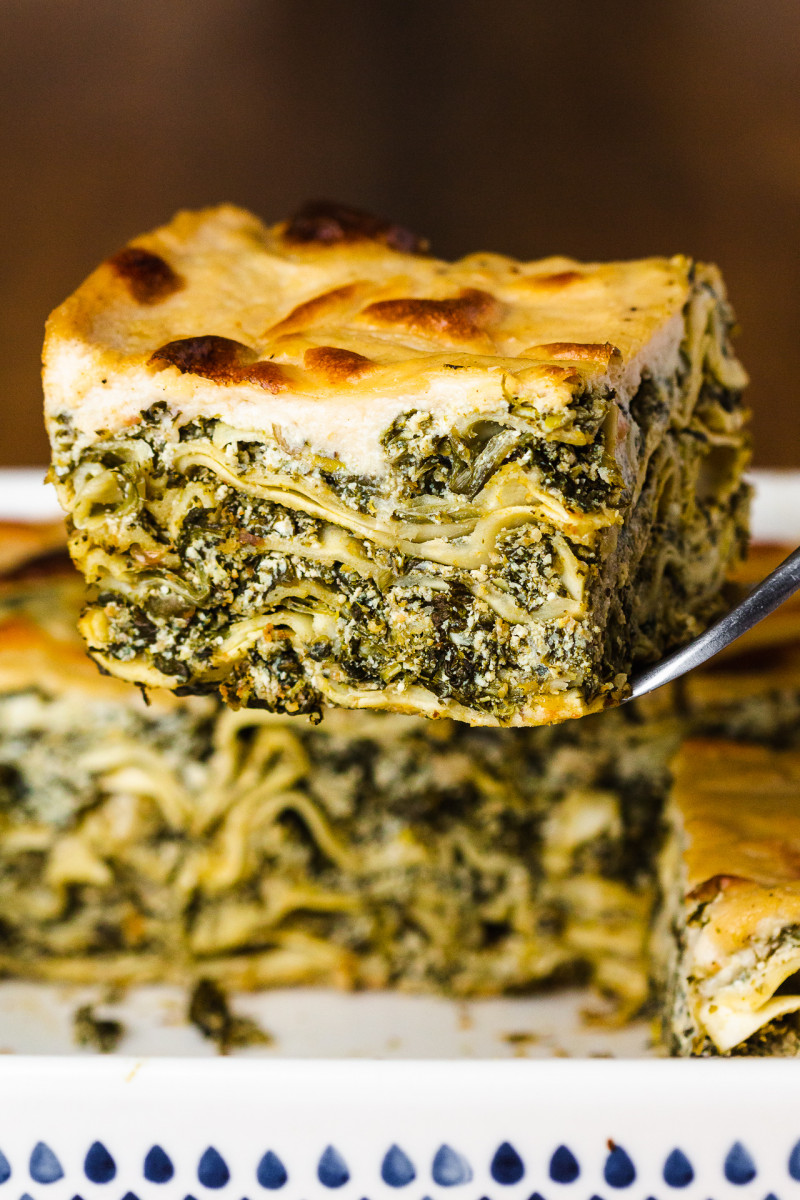
- 1 kg / 35 oz frozen spinach*, defrosted
- 30-60 ml / 2-4 tbsp olive oil
- 1 small onion, finely diced
- 1 leek (or small onion), finely diced
- 6 garlic cloves, finely diced
- 200 g / 1½ cup sunflower seeds* (or cashews), soaked
- 400 g / 14 oz firm unpressed tofu
- 25 g / ½ cup nutritional yeast
- 120 ml / ½ cup lemon juice + zest of 2 lemons
- 30 g / 2 tbsp white miso paste
- 10 g / 1 tbsp chopped dill
- 20 g / 2 tbsp chopped parsley
- ½ tsp ground nutmeg
- 360 ml / 1½ cup soy (or other plant) milk
- ¾ tsp black pepper, adjust to taste
- 1¼-½ tsp fine salt, adjust to taste
PASTA LAYER
- 500 g / 17.5 oz no cook vegan lasagne sheets*
BECHAMEL (or alternative bechamel)
- 5 g / 1 tsp white miso paste
- 780 ml / 3¼ cups plant milk (I used Oatly barista)
- 80 ml / 1/3 cup mild olive oil (or 100 g / 3½ oz vegan butter)
- 80 g / scant 2/3 cup AP flour (or GF flour mix)
- 3 tbsp nutritional yeast
- ½ tsp garlic powder (optional)
- salt to taste
- ¼ tsp pepper, adjust to taste
- freshly grated nutmeg, to taste (or scant ¼ tsp ground)
SPINACH SAUCE
- Heat up olive oil (use 2 tbsp for a less indulgent version) in a large frying pan, add diced onion and sautée on low-medium heat until softened. Add chopped leek and garlic. Continue sautéing until softened.
- Place drained sunflower seeds, unpressed tofu, miso, nutritional yeast, lemon zest, nutmeg, some salt and pepper in a food processor. Process while trickling in plant milk until the mixture resembles ricotta cheese.
- Add sunflower tofu mixture, squeezed out spinach and herbs to the pan with sautéed aromatics. Stir well to combine, add lemon juice (you can adjust the amount to taste) and the rest of the plant milk and adjust seasoning to taste. The mixture will be quite loose/wet when you are done.
BECHAMEL
- Warm plant milk up in a small saucepan. Place miso in a small bowl and add a couple of tablespoons of milk from the saucepan, stir until it dissolves, set aside.
- Slowly heat up olive oil in a large saucepan (stainless steal works best for this). Once the oil starts to shimmer, sprinkle in flour while whisking the whole tine.
- Allow the fat-flour mixture (known as roux) to bubble gently on low-medium heat for a minute, whisking the whole time. Don’t let it brown.
- Take the pot off the heat and slowly pour in warmed plant milk while whisking the whole time. Initially the mixture may look a bit lumpy – don’t worry, it will recover once all the milk has been whisked in. Once the mixture looks stable and smooth, whisk in miso and nutritional yeast and garlic powder (if using).
- Return the pot to the stove. Simmer briefly (while whisking) until the sauce thickens to a consistency of cream. Season with salt, pepper and nutmeg to taste.
ASSEMBLY
- Preheat the oven to 180° C / 390° F (or 160° C / 320° F with fan).
- Put ½ cup of bechamel sauce and ½ cup spinach sauce at the bottom of your baking dish. Follow this up with a layer of lasagne sheets.
- Spread 1½ cups of spinach sauce on top and cover it up with another layer of pasta. Repeat the same two layers two more times.
- Finally spread the remainder of the spinach sauce on top of the last pasta layer followed by all of the bechamel sauce. Spread it evenly with a spatula.
- Cover the dish with a piece of kitchen foil and bake for 30 minutes.
- Increase the oven temperature to 220° C / 430° F, uncover the dish and bake for another last 10-15 minutes until the top is golden brown.
- Allow the dish to set for at least an hour or else the slices will come out messy. Store the leftovers for up to 5 days in the fridge or freeze in air-tight containers.
*TOFU: I used plain tofu by UK brand Cauldron and I did not press it for this application.
*SUNFLOWER SEEDS: I hulled sunflower seeds soaked in cold water overnight, but you can also soak them in boiling water for about 1 hr if you want to speed things up. Cashews could be used instead of sunflower seeds.
*GLUTEN-FREE VERSIONs: If you wish to make this dish gluten-free, find gluten-free pasta sheets and a gluten-free miso that is based on something other than wheat (rice, chickpeas, millet etc.). To make bechamel, use a gluten-free flour mix containing starches and xanthan gum.
*BAKING DISH SIZE: I used a square 25 cm / 10 inch dish that is 5 cm / 2 inches tall, a rectangular 33 cm / 13 inches by 22.5 cm / 9 inches dish works well too.

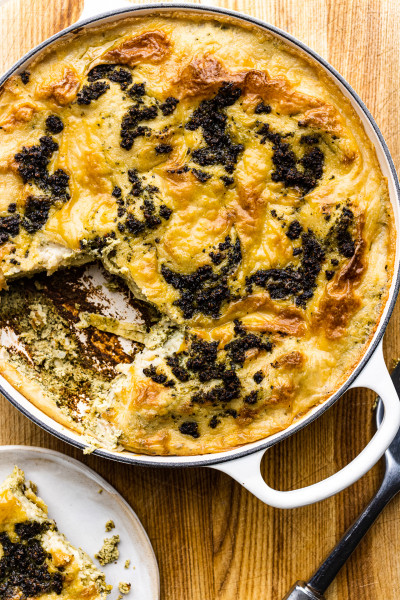
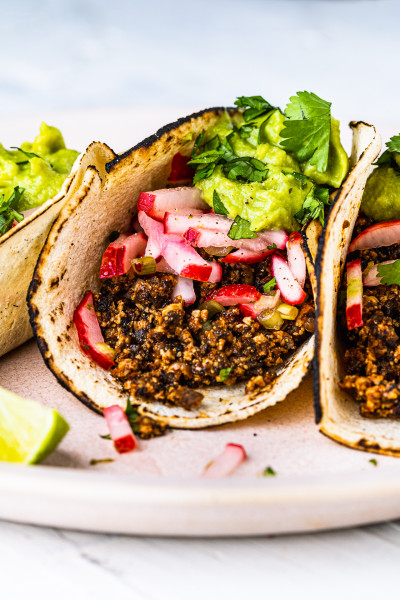
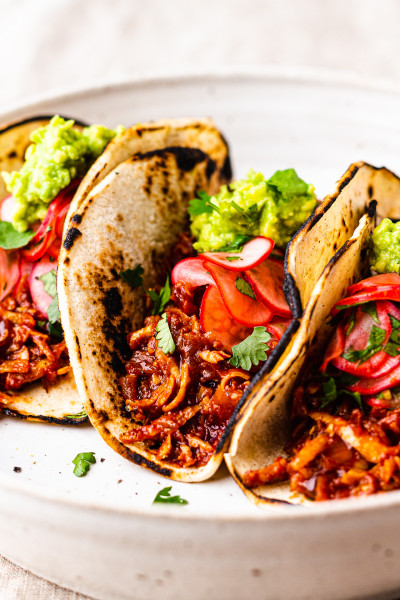
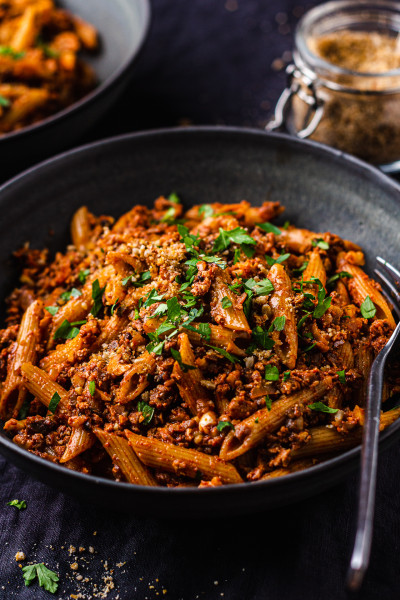

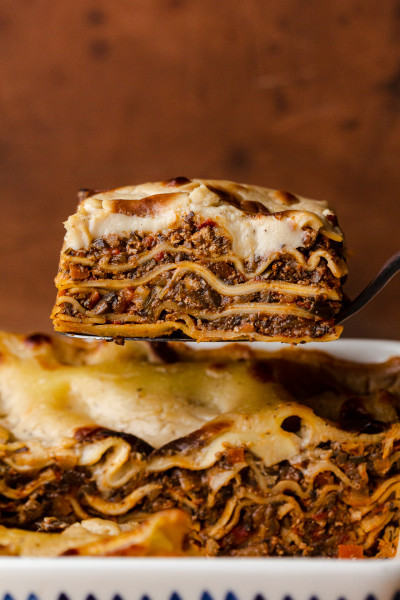
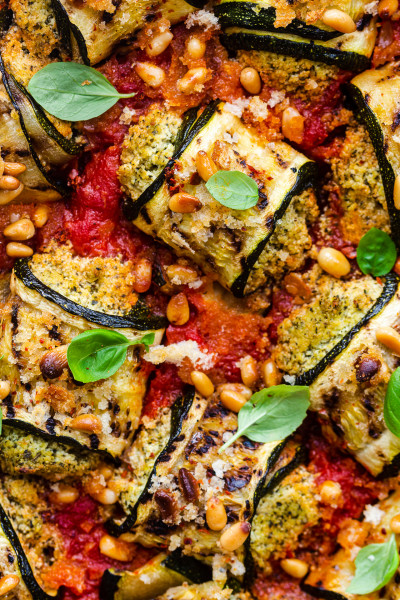
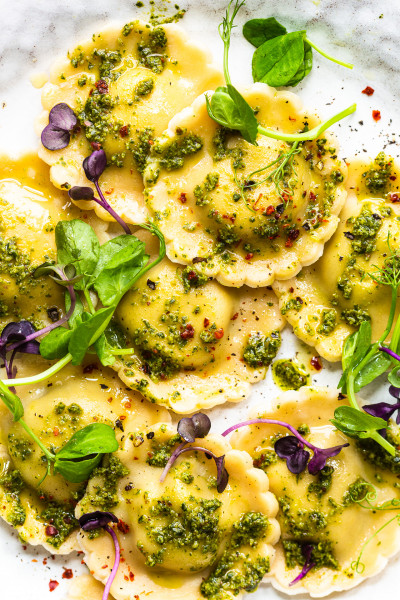
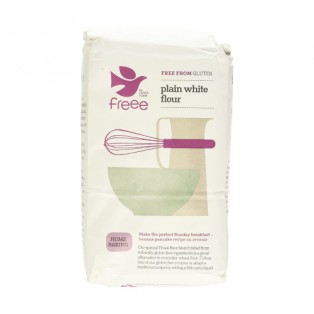
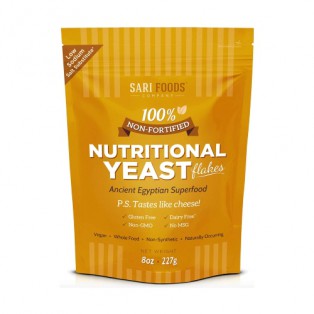
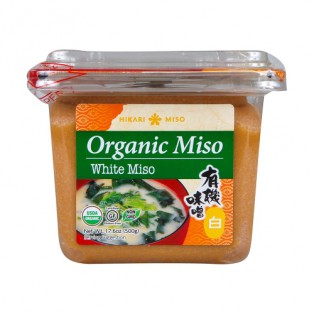
Nutritional yeast is unlike regular yeast, it is inactive yeast so you may be okay to have it. You can omit it, it adds cheesy flavour to vegan cooking. You could compensate by using a little more miso paste, but be careful as it also adds a lot of salt. There is no real substitute for nutritional yeast, I am afraid. Ania
Thank you so much for this recipe!
Firstly, apologies for a delayed reply but I was away on holidays. As for miso, you can get soy-free miso these days, but if that's not an option simply add more nutritional yeast and maybe some minced sundried tomatoes - which also contain a lot of umami - to enhance the flavours. As for tofu, how about using cooked white beans - like white kidney beans (or another type that's quite creamy) in conjunction with sunflower seeds (or cashew nuts) and maybe a little more olive oil for more indulgent texture. I hope that helps! x Ania
Could I substitute tofu with anything else? I'm intolerant to soya.
Thank you.
How about mashed up (cooked) cannellini beans? Hope this helps. x Ania
Yes, sure it will work just fine! Hope you'll enjoy it! x Ania